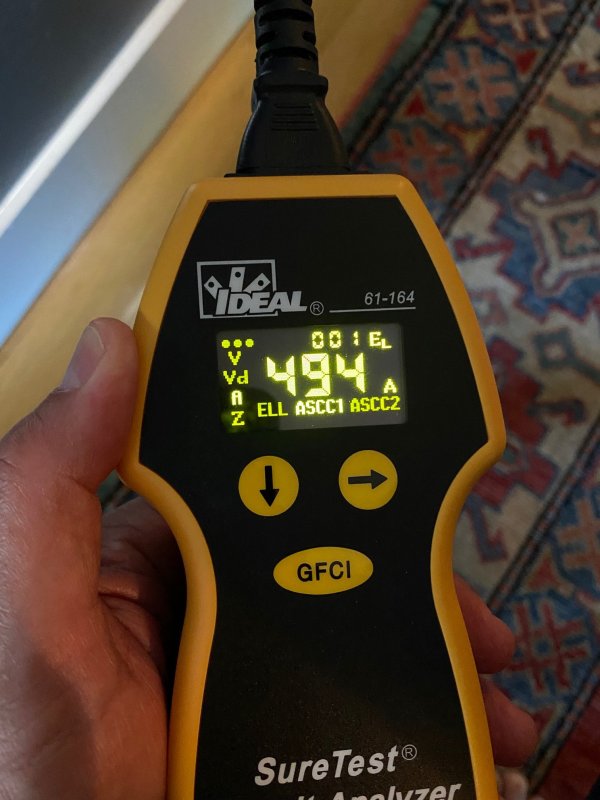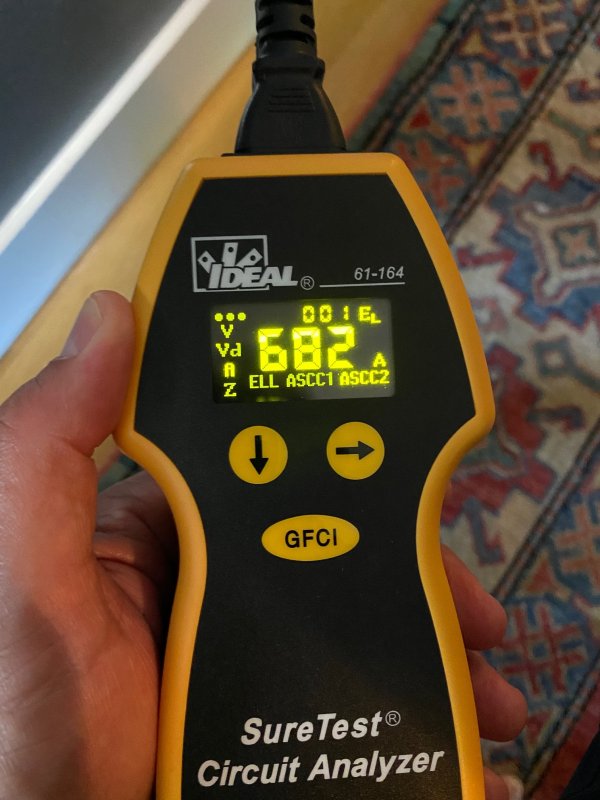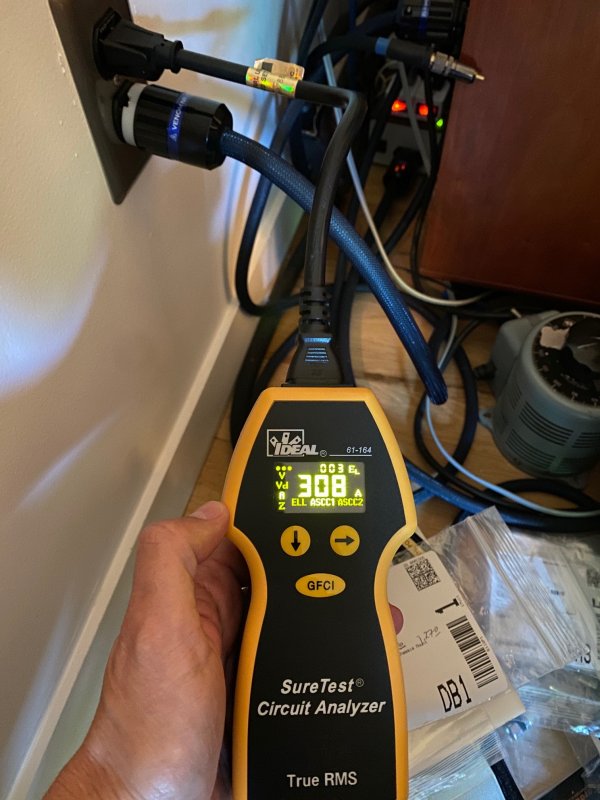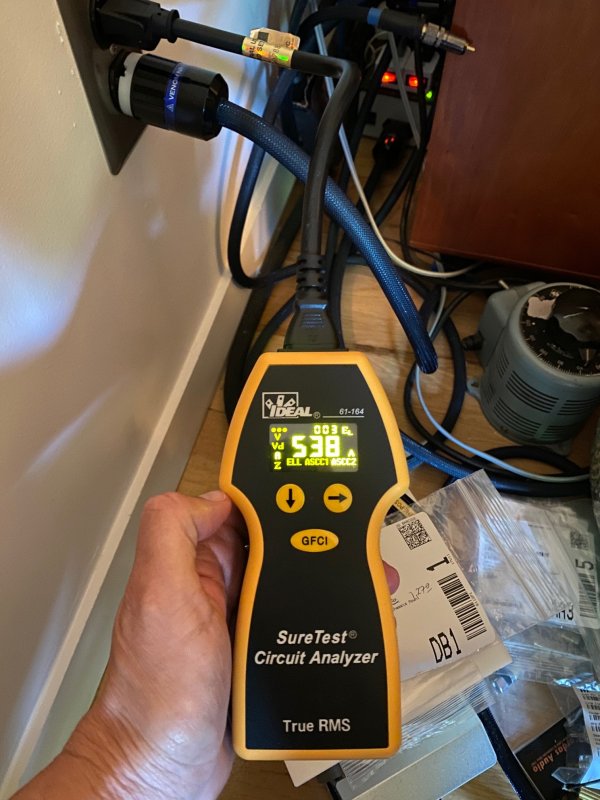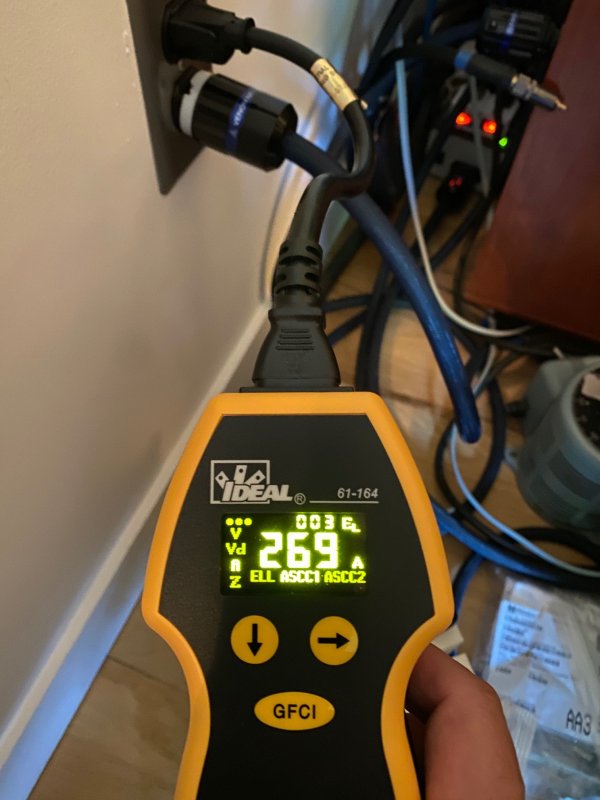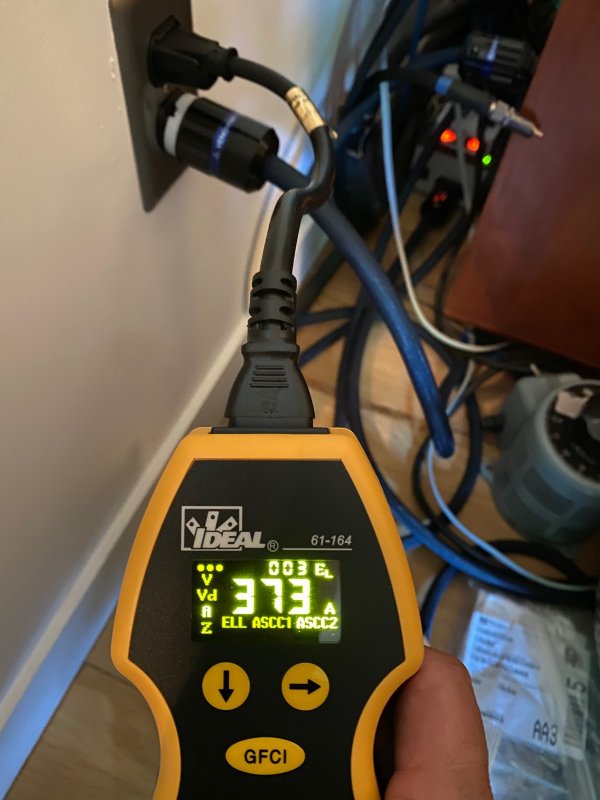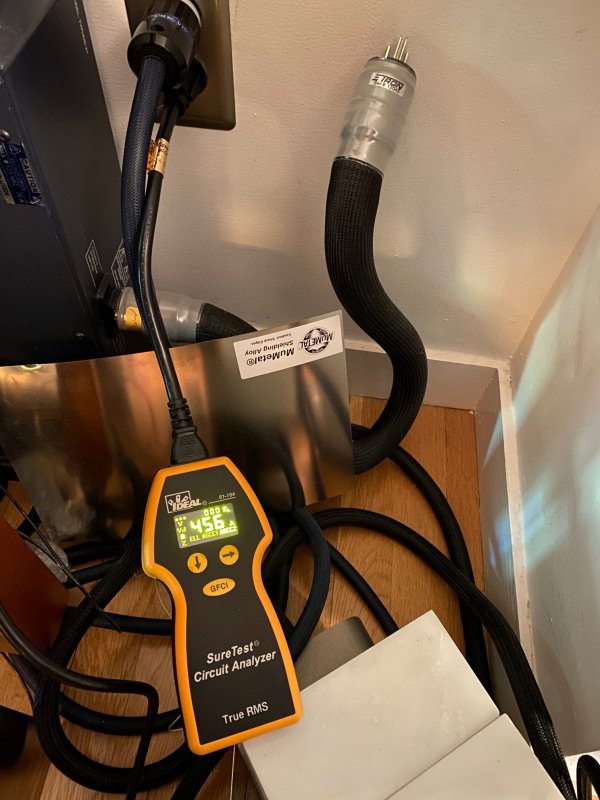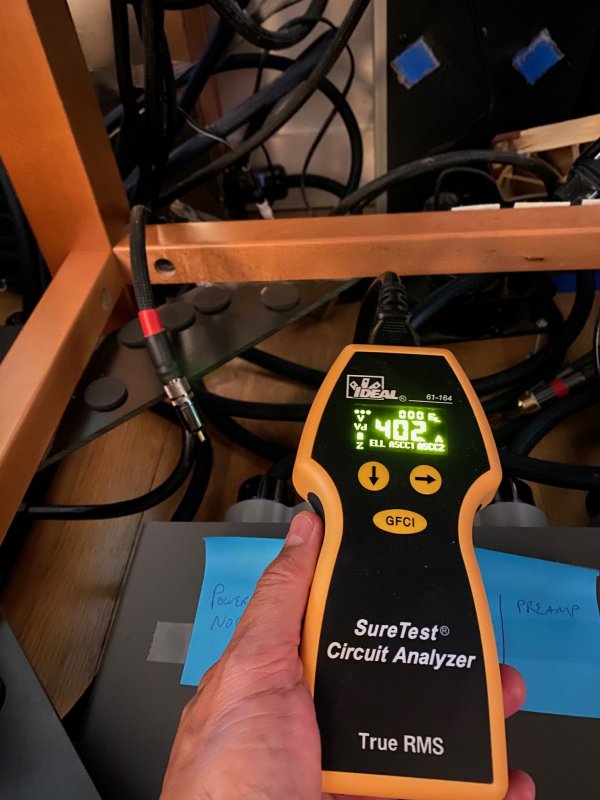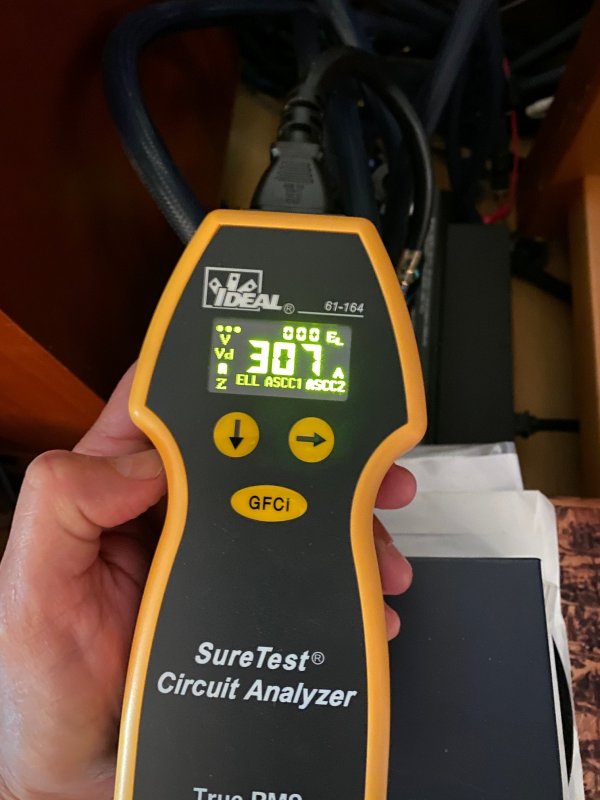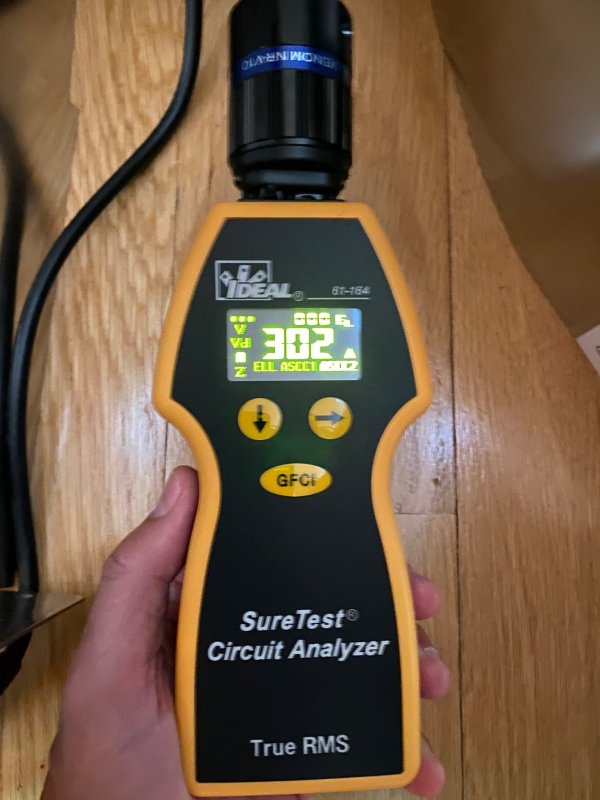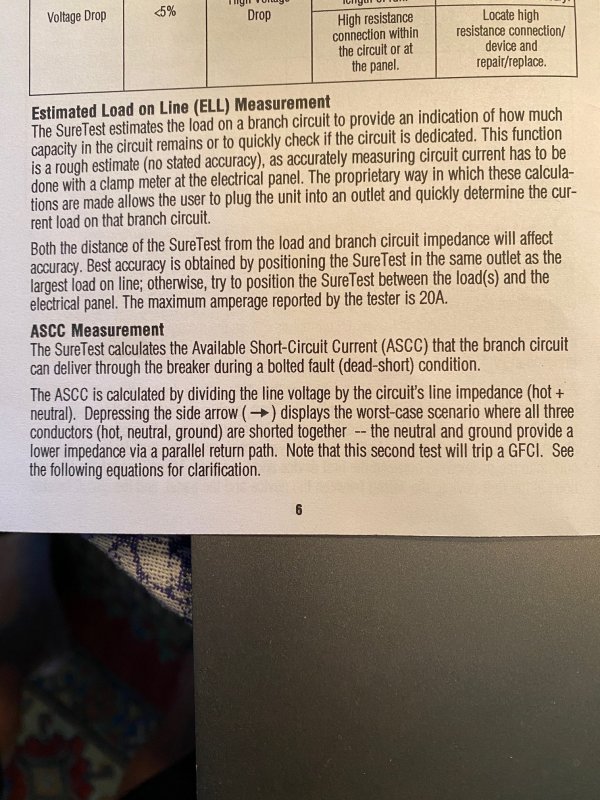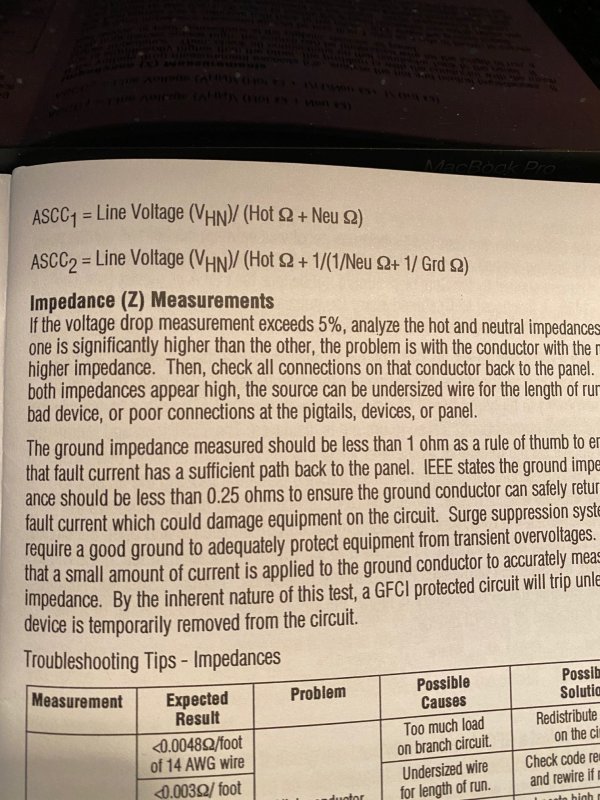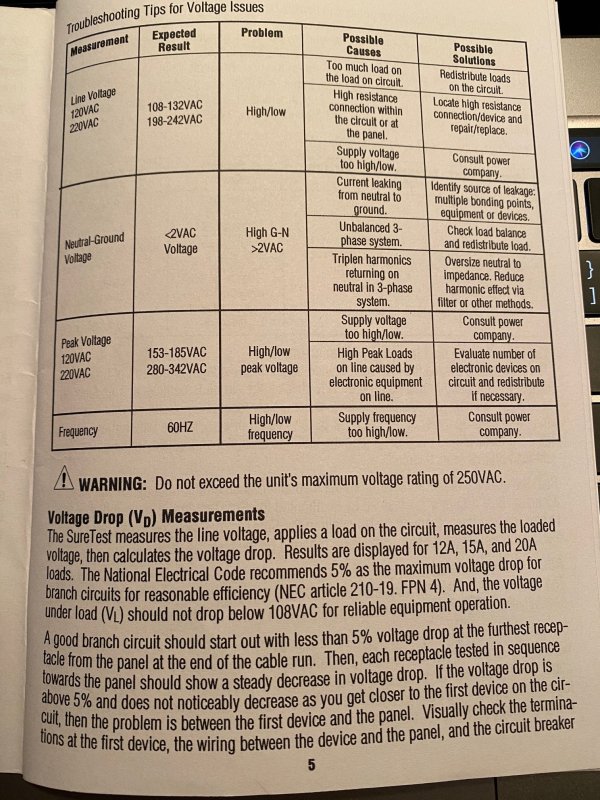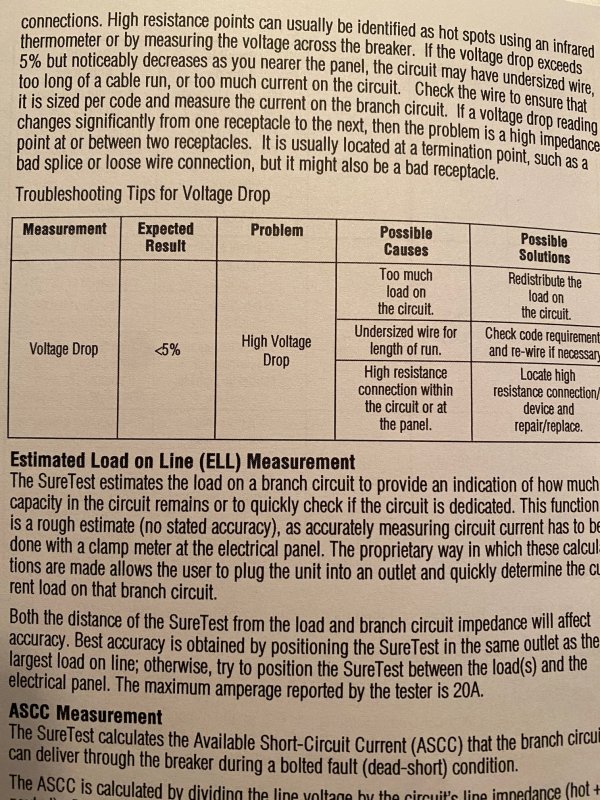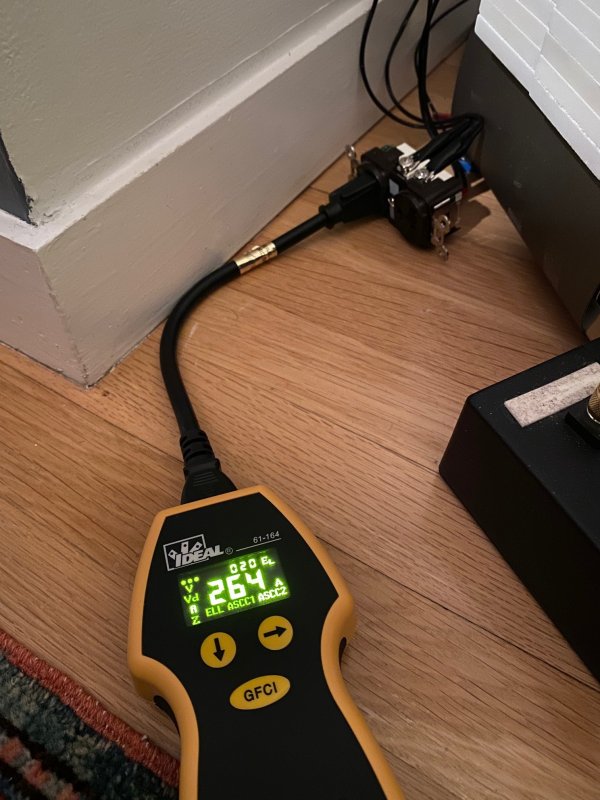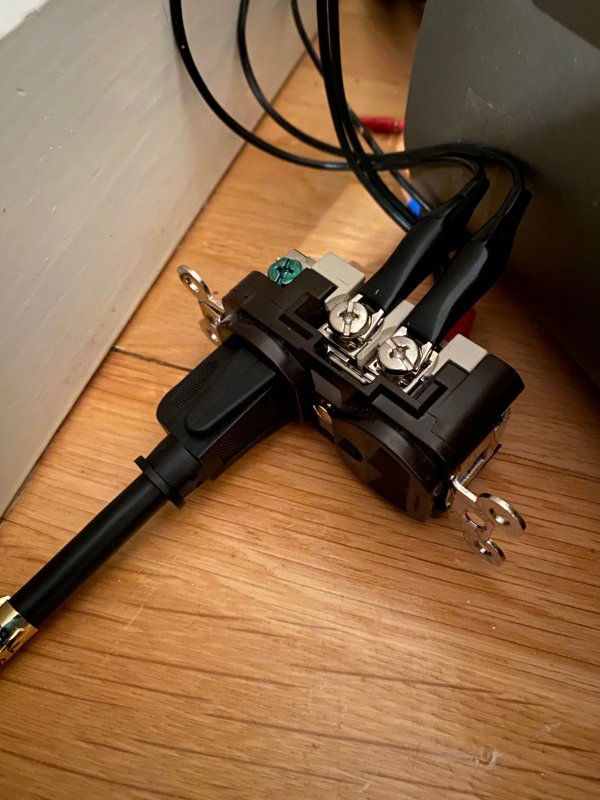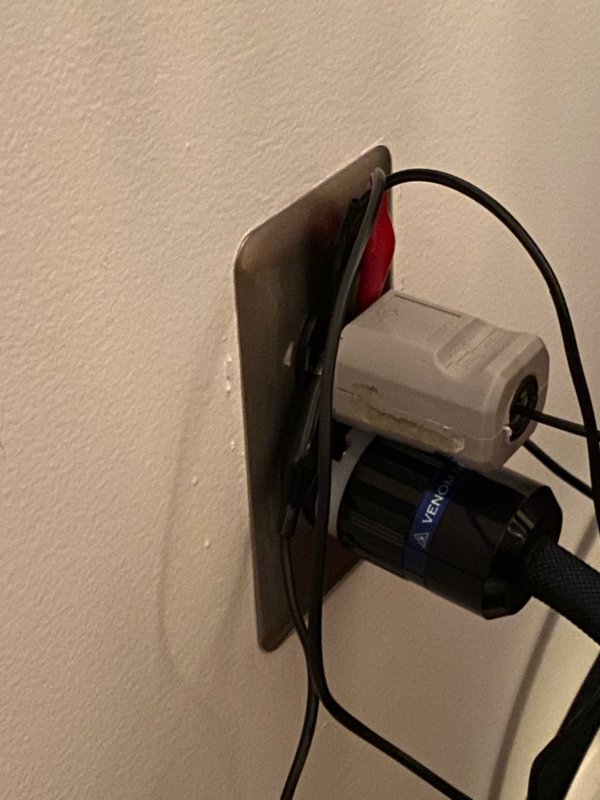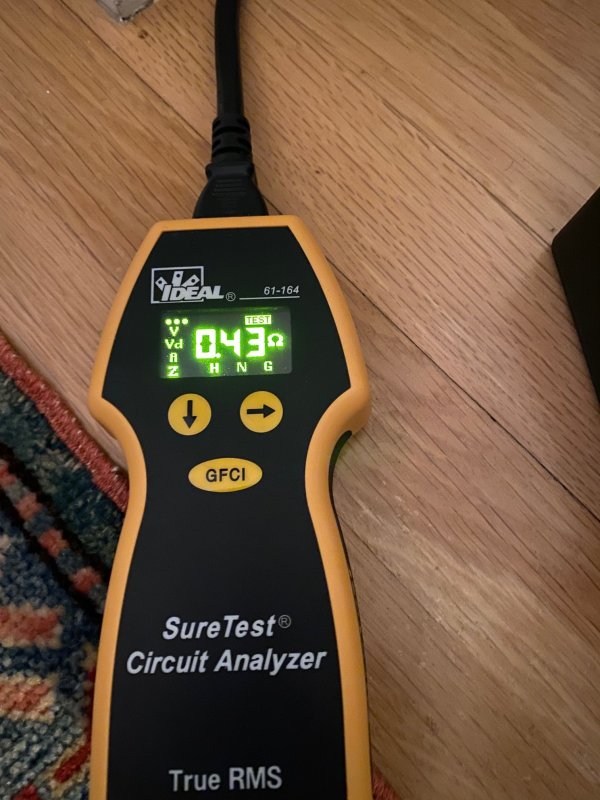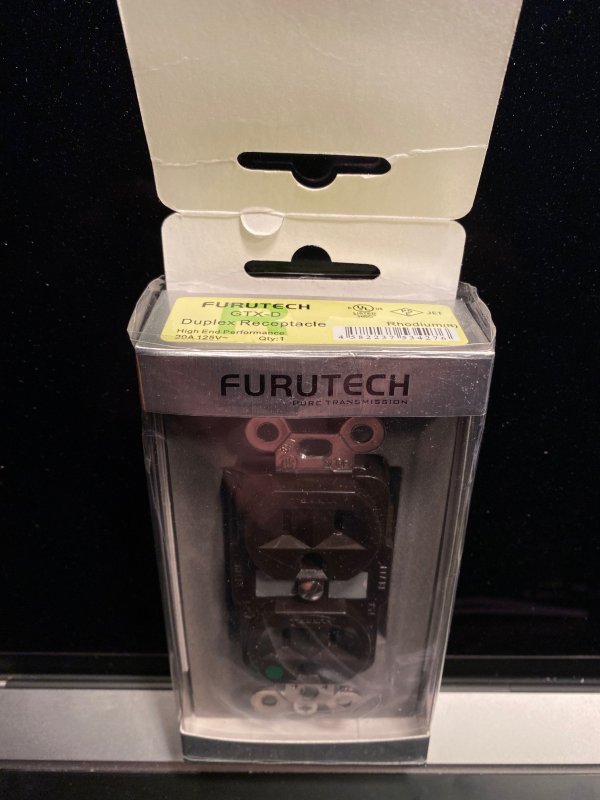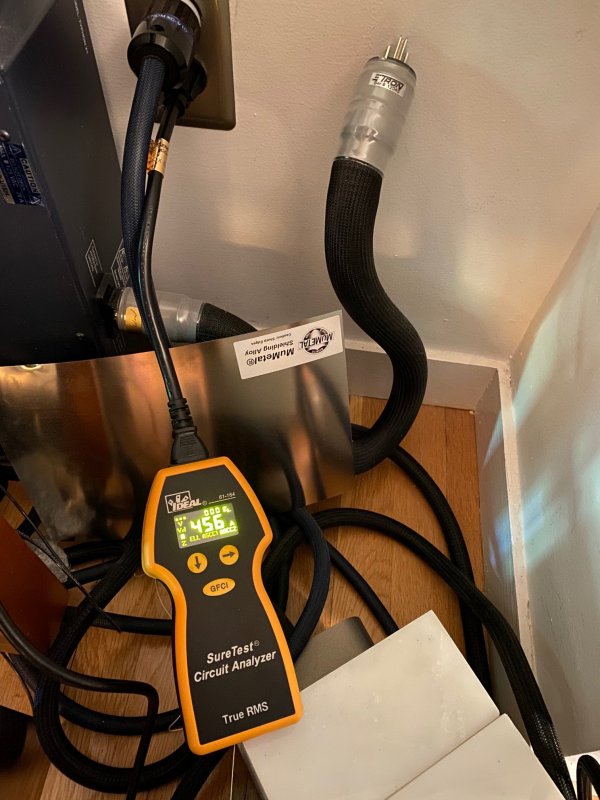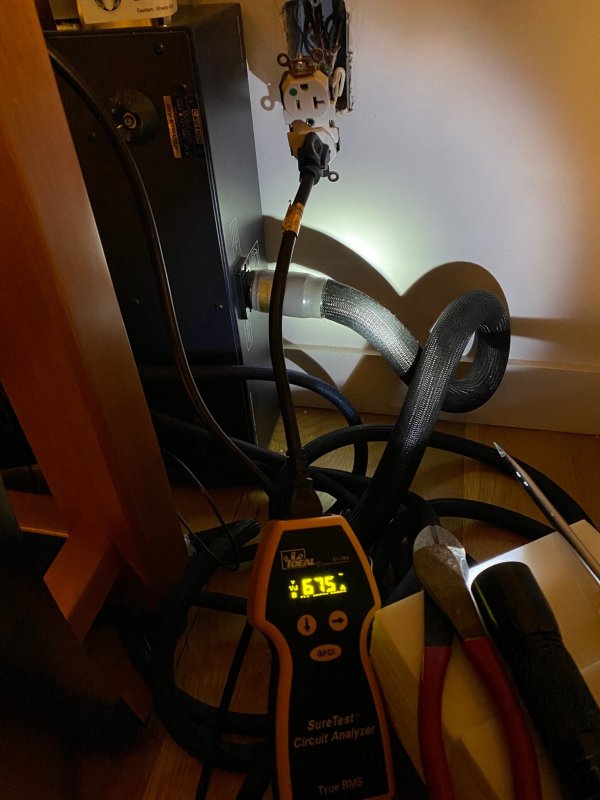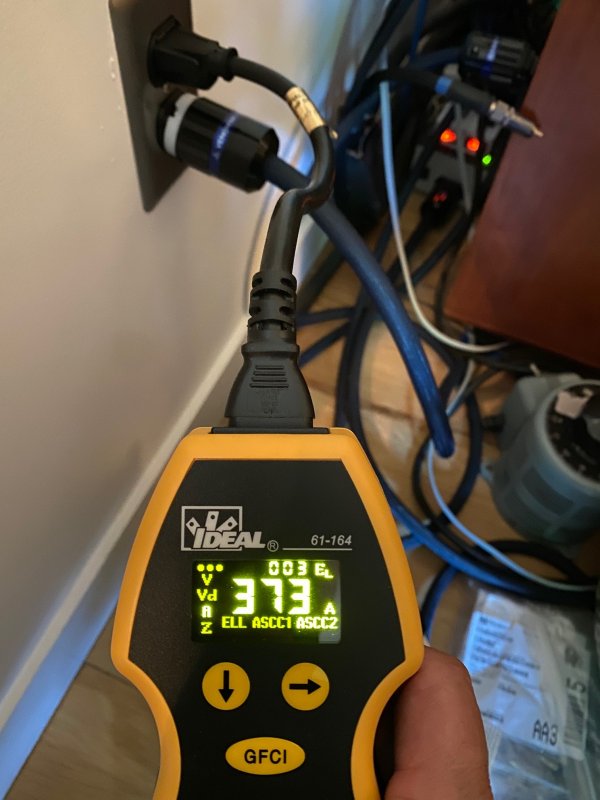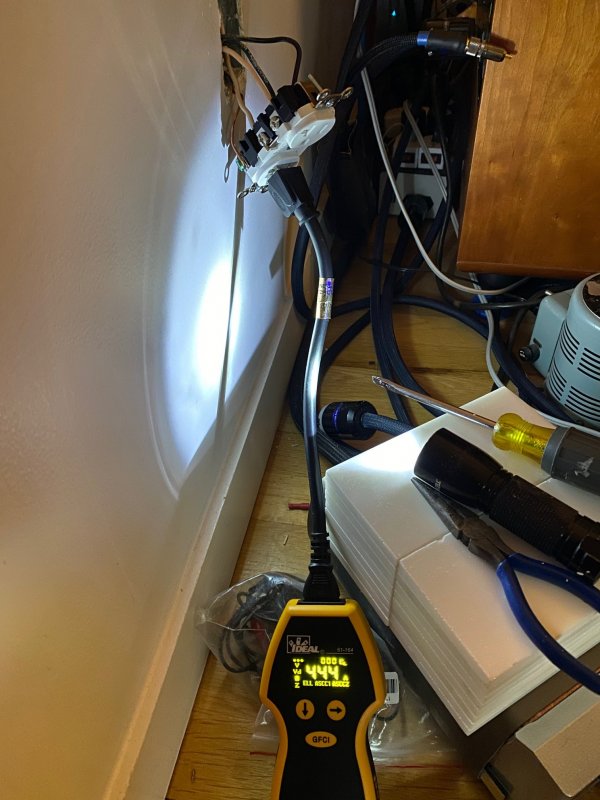First of all, thanks to @VLS again for introducing me to to the IDEAL SureTest 61-164 circuit analyzer https://www.amazon.com/Ideal-Industries-INC-Circuit-Analyzer/dp/B08NPPGKKW which retails for some $400
This device measures power line phase, voltage, impedance, leakage to ground, and peak Amperage availability using two algorithms. Although I think it's a great device, it does not provide continuous info other than Voltage, which means the data is a snapshot at the time you power it on, and that's a real pain when trying to get a sense of fluctuation especially current.
To cut to the chase, VLS in this post https://whatsbestforum.com/threads/...fect-of-shyunyata-products.33031/#post-722583 claims to be getting HIGHER amperage out of the Denali v2 and Sigma power cords over a random stock power cord, and he included the following table:
However, I am UNABLE TO CORROBORATE these findings, as shown below. CONFIRMED, SEE BELOW
First, some basic of in-house measurements.
Phase:
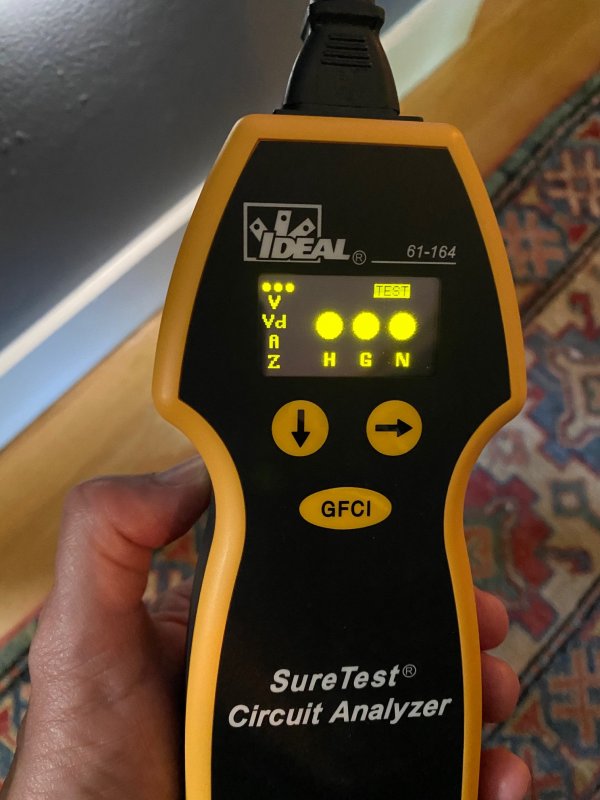
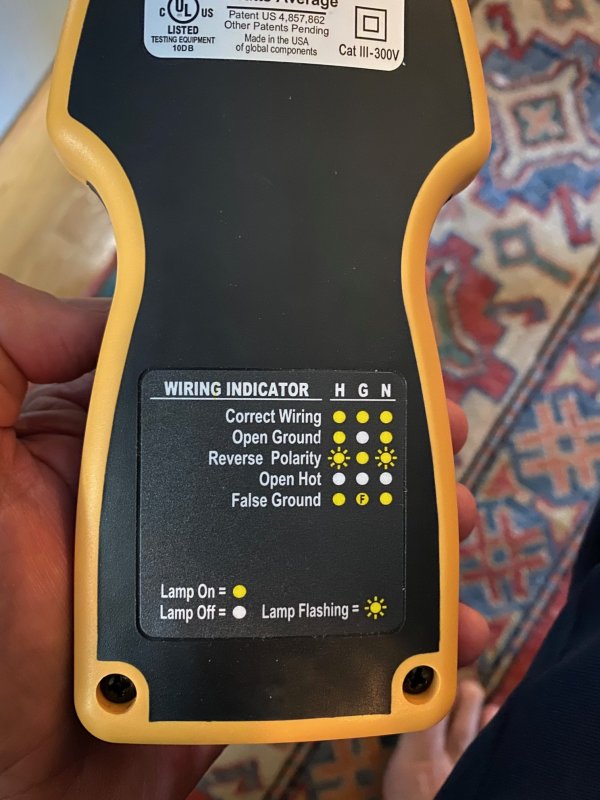
Leakage to ground - 0.6V:
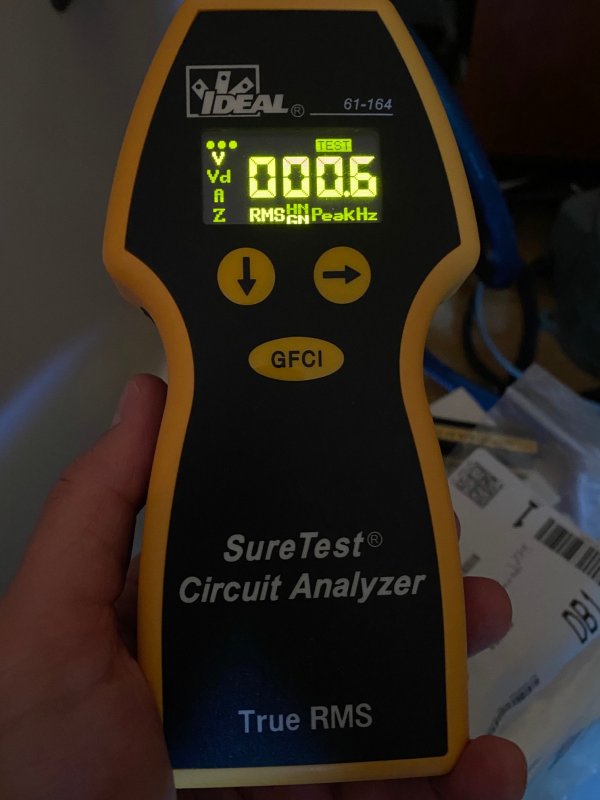
This device measures power line phase, voltage, impedance, leakage to ground, and peak Amperage availability using two algorithms. Although I think it's a great device, it does not provide continuous info other than Voltage, which means the data is a snapshot at the time you power it on, and that's a real pain when trying to get a sense of fluctuation especially current.
To cut to the chase, VLS in this post https://whatsbestforum.com/threads/...fect-of-shyunyata-products.33031/#post-722583 claims to be getting HIGHER amperage out of the Denali v2 and Sigma power cords over a random stock power cord, and he included the following table:
First, some basic of in-house measurements.
Phase:


Leakage to ground - 0.6V:

Attachments
Last edited:









